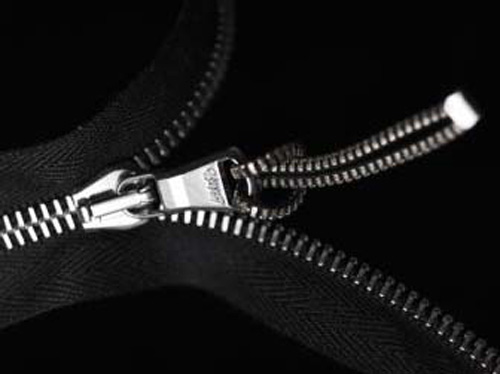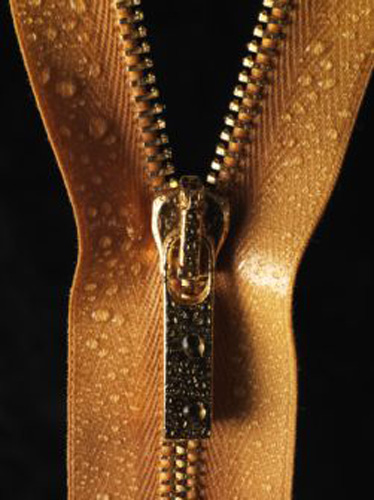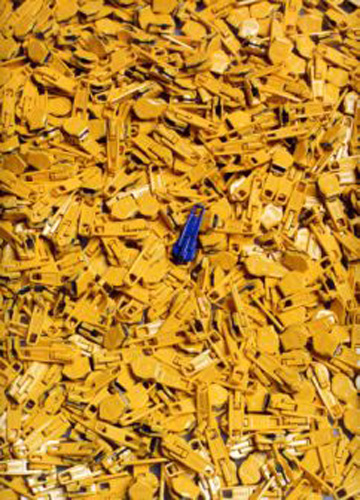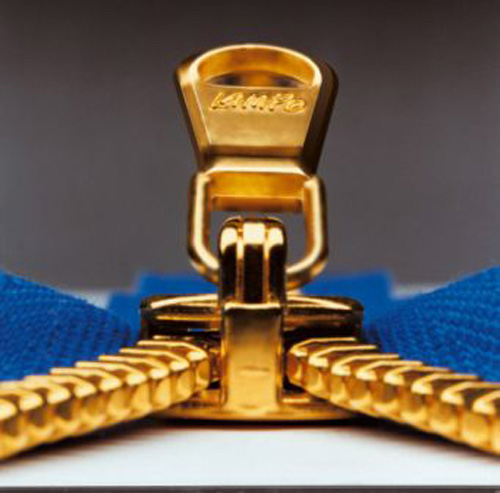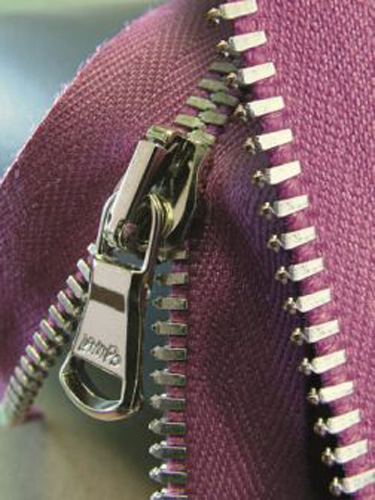You are leaders in zip production. Tell us something about this accessory which is not often talked about.
“The zip was invented around 1890 but at the time it was a cumbersome mechanism with hooks that fitted inside circles. It was decidedly awkward and it tended to pinch the material it was drawing together. It is a product that continues to evolve both from an aesthetic point of view and in terms of the quality of the materials used. It is highly versatile and has thousands of applications. For example, even a gold plated zip was developed. A few microns of this precious metal which, being noble, means the zip is not subject to the problems association with oxidation. The usefulness of this type of zip has been proven by the fact that it is now exported to Hong Kong where the climate is particularly warm and humid and the most suitable metal is gold.”
Do you work on commission?
“All of our production is made on commission, because zips are made to measure. It is almost impossible for two clients to have the same needs in terms of size, colour and material, so we don’t keep ready made articles in the warehouse, because it’s not possible to predict what potential clients will need. The only exception is zips for jeans, as they require a classic design. Our greatest strength is servicing the Asiatic market, which is characterised as requiring small quantities of entirely personalised zips. The big brands are big because of the little details that make them unique.”
Do the crafts remain competitive in the large markets?
“Yes, absolutely. A common problem that happens throughout the world of Italian design is that everything gets copied. The enormous advantage we have is that we continually produce new items and the clients know that we are always ready to innovate. The big fashion names are careful not go for a low value item just to save a few cents.”
Which fashion houses do you work with?
“We do a lot of work with Prada, Gucci, Celine and Chanel…”
What three words define Made in Italy?
“Craftsmanship, flexibility, innovation. It’s a difficult concept to explain, and the discussion might also be a little sterile if we take the example of what Prada do: every label would read “Made in Japan,” because denim is excellent there, or “made in Peru” because that’s where the best alpaca comes from. Made in Italy, on its own, doesn’t make much sense.”



